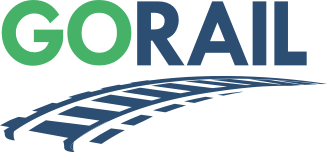At the end of June, the Federal Railroad Administration (FRA) announced 63 projects in 32 states receiving funding in the initial round of the Railroad Crossing Elimination (RCE) grant. Over five years, the grant program will provide some $3.5 billion in funding to projects that eliminate or enhance crossings, with an additional $2.5 billion in authorized funding awaiting congressional approval. The long-term benefits of the program for communities far outweigh the cost: this first round allotted $570 million in funding to projects impacting over 400 railroad crossings.
GoRail recently spoke with the FRA about the initial application round, including lessons learned and advice for successful applications. Here are some key takeaways:
Safety is the goal: Strong applications lean into safety data, for example FRA’s five-year incident data. While improving vehicular, pedestrian and freight fluidity is a directive, safety is the top consideration.

Eligibility: Of the 209 total grant submissions, 37 were ineligible for selection. Reasons for disqualification might include an ineligible submitting entity or a project outside of the defined scope (you can find the fine print on our Rail Grant Hub). Additionally, omitting required attachments or all pieces of an application would lead to ineligibility.
Debrief: The FRA offers debriefs by request to all applicants that had an eligible submission, including specific feedback for strengthening future applications. They also offer webinar resources on various application areas, from creating a project narrative to addressing National Environmental Policy Act (NEPA) and environmental considerations.
Understanding the project: Applicants should apply for what they’re ready to do, understanding the lifecycle of their project. For example, take advantage of the planning grant set-aside for early-stage projects.
Narrative clarity: Strong applications must 1) summarize the project up front in a short paragraph, 2) use a unique project name that describes what you intend to accomplish, and 3) have a cohesive narrative in which the supporting pieces are coherently presented and don’t come across as cobbled together.
Funding clarity: Applications should make the source of their non-federal match clear, ideally by providing documentation. One good way to document is via a resolution passed by a city council, county commission or other such entity indicating local funding commitment. Also, ensure your non-federal funds are truly non-federal.
Fine print: Some projects did not receive funding due to the state reaching the maximum funding allowed. Applicants should review grants awarded in their state to see if this impacted them.
Railroad buy-in: The strongest applications include coordination with the railroads that own the tracks at the crossing in your community. If you don’t know who to call, reach out to your GoRail State Director, who can put you in touch with the right people at the railroad.
Next NOFO: According to FRA, the announcement for the next RCE application period is expected in September or October – so right around the corner. Stay tuned for more information and visit our Rail Grant Hub for resources on rail grants.


